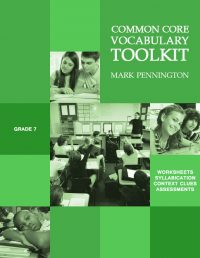Diagnostic Academic Language Assessments
Three questions about Diagnostic Academic Language Assessments: 1. What if you were able to administer comprehensive diagnostic language assessments to determine exactly which Tier 2 academic words your students do and do not know? 2. What if these assessments were ordered by research-based frequency to help you pinpoint instructional levels? There are, and these assessments are absolutely free to administer in self-correcting Google forms.
Rationale: In addition to explicit instruction in Greek and Latin Morphology, figures of speech, word relationships, multiple meanings, and connotations, teachers know the importance of teaching academic language, thanks to the research of Beck, Isabel L. McKeown, M., & Kucan, L. (2002).
Yes, but which words? High frequency and utility seem like sensible selection criteria. Accordingly, I put together Dr. Averil Coxhead’s research-based Academic Word List in self-correcting Google forms as diagnostic assessments to inform instruction. I divided into grades 4, 5, 6, 7, and 8 assessments, each with 56 words and matching definitions. Happy to share: https://blog.penningtonpublishing.com/wp-content/uploads/2023/01/Academic-Language-Diagnostic-Assessments-1.pdf
And question 3… What if there were comprehensive grade-level vocabulary programs (4, 5, 6, 7, and 8), which provided the corresponding instructional resources for each academic language word on the assessments and Greek and Latin Morphology (with Morphology Walls in interactive Google slides), figures of speech, word relationships, multiple meanings, and connotations? There are… check out the extensive previews for Comprehensive Vocabulary by Pennington Publishing.

Comprehensive Vocabulary
If you would like to read more about how Dr. Coxhead developed her Academic Word List and download a free copy of the list, visit https://blog.penningtonpublishing.com/reading/academic-word-list/




